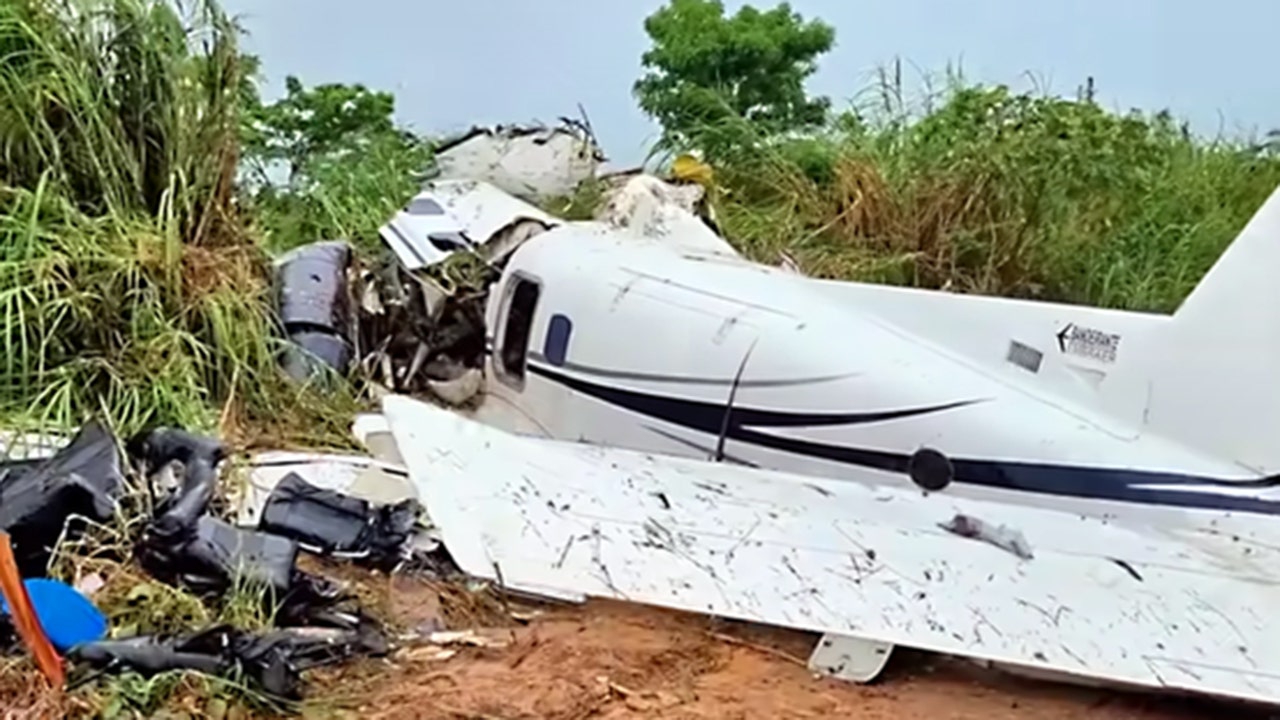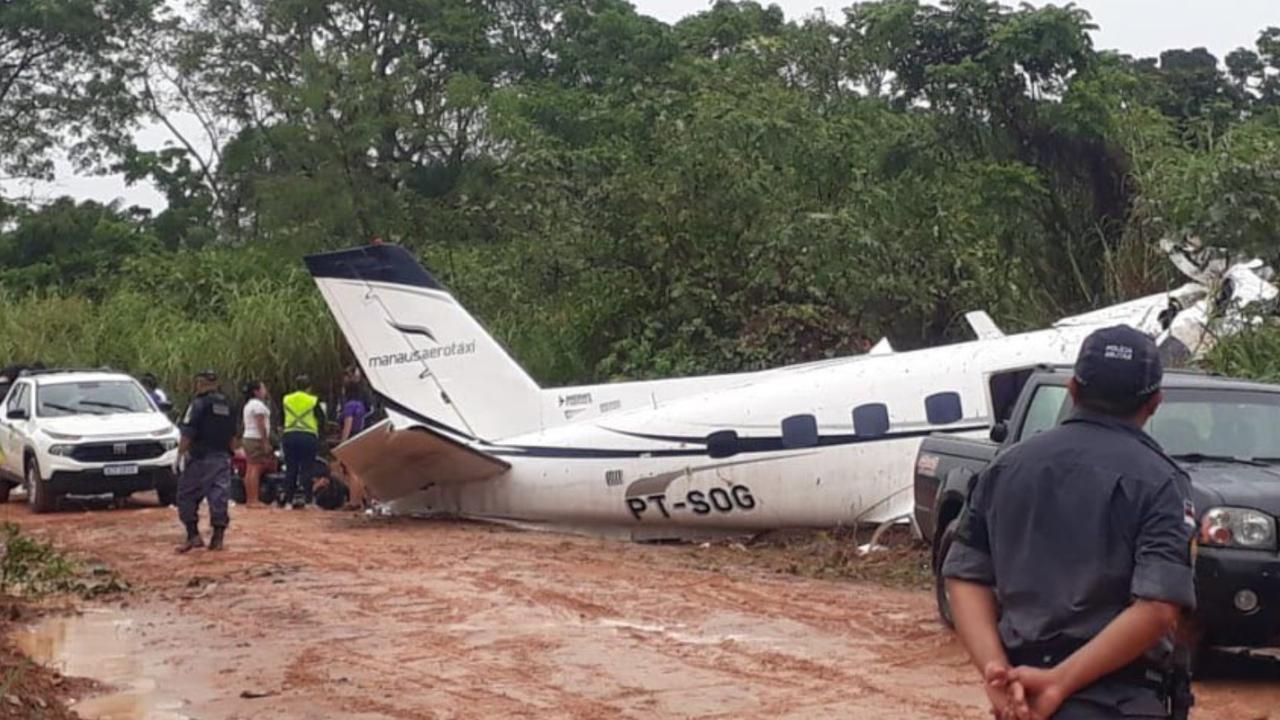History of Plane Crashes in Brazil: Plane In Brazil Crash

Brazil, with its vast geographic expanse and thriving aviation industry, has unfortunately witnessed a significant number of plane crashes throughout its history. These incidents have not only resulted in tragic loss of life but have also spurred advancements in aviation safety regulations and practices. Examining the historical context of these crashes provides valuable insights into the evolution of aviation safety in Brazil and the ongoing efforts to prevent such tragedies.
Timeline of Significant Plane Crashes in Brazil
The history of plane crashes in Brazil is marked by several major events that have had a lasting impact on the country’s aviation sector. Here is a timeline highlighting some of the most significant incidents:
- 1946: Cruzeiro do Sul Flight 757 Crash: This accident, which occurred near the city of Belém, resulted in the deaths of all 24 passengers and crew members. It was one of the deadliest plane crashes in Brazilian history at the time and highlighted the need for improved safety standards.
- 1950: VARIG Flight 967 Crash: This crash, which occurred near the city of São Paulo, resulted in the deaths of all 38 passengers and crew members. The accident was attributed to a combination of factors, including pilot error and mechanical failure.
- 1973: Varig Flight 831 Crash: This crash, which occurred near the city of Paris, France, resulted in the deaths of 123 passengers and crew members. The accident was attributed to a fire in the cargo hold, which caused the plane to lose control.
- 1982: TAM Airlines Flight 352 Crash: This crash, which occurred near the city of São Paulo, resulted in the deaths of all 97 passengers and crew members. The accident was attributed to pilot error, which caused the plane to stall and crash into a residential area.
- 1989: Avianca Flight 52 Crash: This crash, which occurred near the city of New York City, USA, resulted in the deaths of 73 passengers and crew members. The accident was attributed to a combination of factors, including pilot error, fuel exhaustion, and weather conditions.
- 2006: Gol Transportes Aéreos Flight 1907 Crash: This crash, which occurred near the city of Manaus, resulted in the deaths of all 154 passengers and crew members. The accident was attributed to a mid-air collision with an executive jet.
- 2007: TAM Airlines Flight 3054 Crash: This crash, which occurred at São Paulo-Congonhas Airport, resulted in the deaths of 199 passengers and crew members. The accident was attributed to a combination of factors, including pilot error, runway conditions, and weather conditions.
Evolution of Aviation Safety Regulations and Measures in Brazil
The history of plane crashes in Brazil has been a catalyst for the development and implementation of stricter aviation safety regulations and measures. The Brazilian National Civil Aviation Agency (ANAC) plays a crucial role in overseeing aviation safety in the country. Over the years, ANAC has implemented a series of measures aimed at improving aviation safety, including:
- Establishment of stricter pilot training and licensing requirements: ANAC has implemented rigorous training programs for pilots, ensuring that they meet the highest standards of competency and proficiency.
- Enhanced aircraft maintenance and inspection procedures: ANAC has implemented comprehensive maintenance and inspection procedures for aircraft, ensuring that they are in safe and airworthy condition.
- Improved airport infrastructure and safety protocols: ANAC has worked to improve airport infrastructure, including runway lighting, navigation systems, and emergency response protocols.
- Increased enforcement of aviation safety regulations: ANAC has increased its efforts to enforce aviation safety regulations, imposing penalties on airlines and pilots who violate these regulations.
Comparison of Plane Crash Frequency and Causes in Brazil to Other Countries
While Brazil has experienced a significant number of plane crashes, it is important to compare its aviation safety record to other countries. The International Civil Aviation Organization (ICAO) provides a global framework for aviation safety, and countries are ranked based on their safety performance.
- Frequency of Plane Crashes: Brazil’s plane crash frequency has generally been higher than in other developed countries. This is partly attributed to the country’s vast geographic expanse and the high volume of air traffic.
- Causes of Plane Crashes: The causes of plane crashes in Brazil are similar to those in other countries, including pilot error, mechanical failure, and weather conditions. However, some unique factors contribute to the high number of crashes in Brazil, such as:
- Lack of adequate infrastructure in remote areas: The lack of adequate infrastructure in remote areas of Brazil can make it difficult for pilots to navigate and land safely.
- Challenges associated with flying in tropical climates: Flying in tropical climates can present unique challenges for pilots, such as turbulence, thunderstorms, and heavy rainfall.
- Limited resources for aviation safety: Brazil has faced limitations in resources for aviation safety, which can impact the effectiveness of safety measures.
Causes of Plane Crashes in Brazil

Brazil, with its vast geographical expanse and robust aviation industry, has experienced its share of aviation accidents. While the country has made significant strides in aviation safety, understanding the contributing factors to plane crashes remains crucial for continuous improvement. Analyzing the most common causes, including pilot error, mechanical failure, weather conditions, and terrorism, along with the role of air traffic control and airport infrastructure, can provide valuable insights into preventing future tragedies.
Pilot Error
Pilot error is a significant contributing factor to aviation accidents worldwide, and Brazil is no exception. Human factors, such as fatigue, lack of training, and poor decision-making, can lead to fatal consequences. For instance, a 2017 report by the Brazilian Civil Aviation Agency (ANAC) attributed a significant percentage of accidents to pilot error, highlighting the importance of robust pilot training programs and ongoing proficiency assessments.
Mechanical Failure
Mechanical failure, encompassing issues with aircraft engines, airframes, and other critical systems, can also lead to catastrophic events. Regular maintenance, rigorous inspections, and adherence to safety standards are essential for preventing such failures. In 2019, a Boeing 737 operated by Gol Airlines experienced engine failure shortly after takeoff, resulting in a successful emergency landing. This incident underscores the critical role of proper maintenance in ensuring aircraft safety.
Weather Conditions
Brazil’s diverse geography and tropical climate expose its aviation industry to various weather challenges, including thunderstorms, heavy rainfall, and strong winds. These conditions can significantly impact flight operations, leading to delays, diversions, and, in extreme cases, accidents. In 2021, a small aircraft crashed during a severe thunderstorm, highlighting the importance of accurate weather forecasting and pilot training in managing adverse weather conditions.
Terrorism
While terrorism has not been a significant factor in aviation accidents in Brazil, the threat remains a concern globally. The country has implemented robust security measures at airports and on board aircraft to mitigate this risk. However, continuous vigilance and proactive measures are essential to ensure the safety of passengers and crew.
Air Traffic Control and Airport Infrastructure
Effective air traffic control and well-maintained airport infrastructure play crucial roles in preventing accidents. Air traffic controllers guide aircraft safely through the airspace, ensuring separation and preventing collisions. Modernized airport infrastructure, including runways, navigation systems, and emergency response facilities, enhances safety and operational efficiency. In 2020, a runway incursion incident at a major Brazilian airport highlighted the importance of clear communication and robust safety protocols within air traffic control systems.
Specific Safety Concerns and Vulnerabilities
The Brazilian aviation industry faces several specific safety concerns and vulnerabilities, including:
- Limited resources and infrastructure in remote areas, potentially impacting emergency response capabilities and safety standards.
- Challenges in enforcing regulations and ensuring compliance with safety standards across all operators, particularly smaller airlines and private operators.
- The need for continuous investment in research and development to address emerging safety challenges and enhance technological capabilities.
Impact of Plane Crashes in Brazil
Plane crashes in Brazil have profound and far-reaching consequences, affecting not only the immediate victims and their families but also the nation’s social fabric, economy, and international reputation. The tragic loss of life, economic disruption, and public perception of aviation safety are all intertwined in the aftermath of these events.
Social Impact
Plane crashes in Brazil result in significant loss of life, causing immense grief and suffering for families and communities. The impact on survivors can be equally devastating, leading to physical and psychological trauma, as well as long-term health issues. These tragedies often highlight the vulnerability of human life and the fragility of safety measures in the aviation industry.
Economic Impact
Plane crashes have a substantial economic impact on Brazil, affecting various sectors. The loss of life can lead to a decline in productivity, particularly in industries where skilled professionals are involved. The cost of rescue and recovery operations, including medical care and compensation for victims, can be significant. Additionally, the impact on tourism and international travel can be substantial, leading to a decline in revenue and job losses.
Political Impact
Plane crashes often trigger public scrutiny of aviation safety regulations and the effectiveness of government agencies responsible for oversight. The Brazilian government has implemented various measures to enhance aviation safety, including stricter regulations, improved training for pilots and air traffic controllers, and increased investment in infrastructure. However, public trust in the aviation industry can be eroded after major accidents, leading to increased calls for accountability and reform.
Role of Government Agencies, Plane in brazil crash
The Brazilian government has established various agencies to respond to and investigate plane crashes, including the National Civil Aviation Agency (ANAC) and the National Institute of Aviation Medicine (INAM). ANAC is responsible for regulating and overseeing all aspects of civil aviation in Brazil, including safety standards, aircraft maintenance, and pilot training. INAM investigates accidents and incidents involving aircraft, providing technical expertise and recommendations to improve safety measures.
Impact on Tourism Industry
Plane crashes can significantly impact the Brazilian tourism industry, particularly in regions heavily reliant on air travel. The negative publicity associated with these events can deter tourists from visiting Brazil, leading to a decline in visitor numbers and revenue. This can have a cascading effect on local businesses, including hotels, restaurants, and tour operators.
Impact on International Travel
Plane crashes can also impact international travel to Brazil, as travelers may perceive the country as having a higher risk of aviation accidents. This can lead to a decline in bookings and a reduction in demand for flights to Brazil. The impact on international travel can be particularly significant for businesses that rely on international tourism, such as airlines, hotels, and travel agencies.
Plane in brazil crash – The recent plane crash in Brazil has raised questions about safety protocols and aviation standards in the region. A similar tragedy, the crash of a commercial flight in 2014, was covered extensively by journalist linsey davis , who has a long and distinguished career in broadcast journalism.
Following the latest incident, authorities are investigating potential contributing factors, including weather conditions and maintenance records.
The tragic plane crash in Brazil has cast a shadow over the country, highlighting the importance of safety in aviation. While the investigation into the cause of the crash continues, the incident serves as a reminder of the fragility of life and the risks inherent in air travel.
One might consider the resilience of Alex Highsmith, a linebacker for the Pittsburgh Steelers , who has overcome adversity on the field, mirroring the courage and determination needed to navigate the aftermath of such a devastating event.

